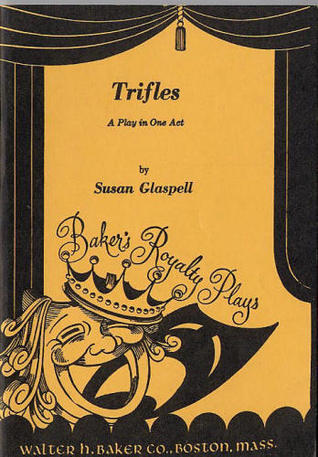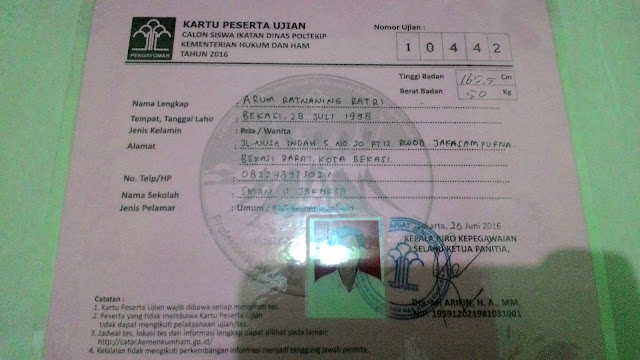Feminist Approach to Trifles Play by Susan Glaspell
Feminist
Approach to
Trifles Play by
Susan Glaspell
Introduction
Susan Glaspell was inspired to write Trifles from a
real story while working as a news journalist for the Des Moines Daily News.
The play is loosely based on the murder of John Hossack. Hossack's wife,
Margaret, was accused of killing her husband. Glaspell set the play in early
1900s in America when women got way less respect from men and had to accept the
gender roles that oppress them as something of a natural world order.. Using
feminist approach, I try to point out oppression that women get from society
which is an issue emphasized by the author, Glaspell, in Trifles play. I will
analyze the story’s settings, themes, and symbols that have a relationship with
feminism. The purpose of this analysis is to show that Susan Glaspell wrote
Trifles as a work of social criticism that focuses on feminism.
Body
Summary
The sheriff, his wife, the county attorney, and the
neighbors (Mr. and Mrs. Hale) enter the kitchen of the Wright household. Mr.
Hale explains how he paid a visit to the house on the previous day. Once there,
Mrs. Wright greeted him but behaved strangely. She eventually stated in a dull
voice that her husband was upstairs, dead. The audience learns of John Wright’s
murder through Mr. Hale’s exposition. He is the first, aside from Mrs. Wright,
to discover the body. Mrs. Wright claimed that she was sound asleep while
someone strangled her husband. It seems obvious to the male characters that she
killed her husband, and she is been taken into custody as the prime suspect.
The men continually disparage the women for worrying
about trifles instead of about the case, but Henderson allows the women to
collect some items for Mrs. Wright, who is in custody, as long as he agrees
that the objects are irrelevant to the case. While the men are investigating
upstairs, Mrs. Hale reminisces about how happy Mrs. Wright had been before her
marriage, and she regrets that she had not come to visit Mrs. Wright despite
suspecting the unhappiness she had suffered as John Wright's wife. After
looking around the room, the women discover a quilt and decide to bring it with
them, although the men tease them for pondering about the quilt as they briefly
enter the room before going to inspect the barn.
Meanwhile, the women discover an empty birdcage and
eventually find the dead bird in a box in Mrs. Wright's sewing basket while
they are searching for materials for the quilt. The bird has been strangled in
the same manner as John Wright. Although Mrs. Peters is hesitant to flout the
men, who are only following the law, she and Mrs. Hale decide to hide the
evidence, and the men are unable to find any clinching evidence that will
prevent her from being acquitted by a future jury - which will, the play
implies, most likely prove sympathetic to women.
Analysis
The play establishes its themes in its opening
moments. The play examines the relationships between husbands and wives,
particularly a marriage that ended in murder. The setting, a messy kitchen,
reflects this. The women stand together, highlighting both the way they have
been pushed together by their male-dominated society but also, possibly, their
loyalty to each other over their husbands, a topic explored in the play.
According to Shmoop Editorial Team (2008), the slew
of sexist comments from the menfolk in the play represent the attitude of most
men in the country. Those very men also fail to recognize their role in
oppressing the women. As a result, the men belittle the women, mocking their
character, intelligence, and subservience. The men laugh at the women for their
emphasis on “trifles,” the small needs of housekeeping and comfort, even when
those things are all the men allow the women to have. The men have not only
oppressed the women, they also blame the women for enjoying the only things
their oppression allows them to have.
The male characters are prejudiced in believing that
nothing important can be discovered in areas of the house where Minnie spent
most of her time. Their minds are clouded by prejudice and they disregard
important clues as being mere "trifles" that women concern themselves
with. They search the barn and the bedroom, places where men have dominance,
rather than the kitchen, the only place where a woman would be in charge. One
important line, spoken by the sheriff, says of the kitchen "Nothing here
but kitchen things." This dismissal of the importance of a woman's life
and the male reluctance to enter the "women's sphere" is key in the
men's failure to discover the crucial evidence for the case. The most important
evidence, the dead canary that the two women find, was hidden in Minnie's
sewing basket.
The two women, having pieced together the murder,
face the moral dilemma of telling the men about the motive or protecting
Minnie, whom they see as a victim. Their choice raises questions about
solidarity among women, the meaning of justice, and the role of women in
society as a source of justice. As they recognize that Minnie was abused by her
husband, the two women hiding the evidence against Minnie so that she will not
be found guilty. The women side with Minnie and understand why she chose to
kill her husband.
At the beginning of the play, the women too seem to
accept the gender roles that oppress them as something of a natural world
order. However, as the play progresses, Mrs. Hale and Mrs. Peters come to
recognize that, as women, they are being oppressed. In Minnie’s dead bird – a
bird strangled by her husband – they see their own strangled hopes, perhaps
even their own strangled lives. They become sympathetic to the difficulties
Minnie Wright experienced after his marriage to John Wright since they also
feel the same as fellow wife. In this joint recognition they find a connection
between themselves and with other women, and begin, in their own quiet yet
profound way, to rebel. Mrs. Hale and Mrs. Peters decide to hide the evidence
against Minnie from the men.
Conclusion
Trifles is seen as an example of early feminist
drama. Gender is the central theme of the play. All three of the men are so
focused on gathering evidence to use against Minnie in court that they ignore
the signs ("trifles") that illuminate her emotional state leading up
to the murder. Only the women are able to understand and sympathize with
Minnie. The female characters find the body of a canary, with its neck wrung,
killed in the same way as John Wright, thus leading them to the conclusion that
Minnie was the murderer. Clearly, the wife is represented by the caged bird, a
common symbol of women's roles in society and a symbol of lost freedom. Its
cage, broken during one of John Wright's rages, is symbolic of Minnie's
marriage, which traps her with a man she doesn't love in a farmhouse that's
isolated from the community. The plot concludes with the two women hiding the
evidence against Minnie.
Author:
Arum Ratnaning Ratri
2211416050
English Literature, 2016
Universitas Negeri Semarang
For subject:
Drama Analysis (407)


Komentar
Posting Komentar